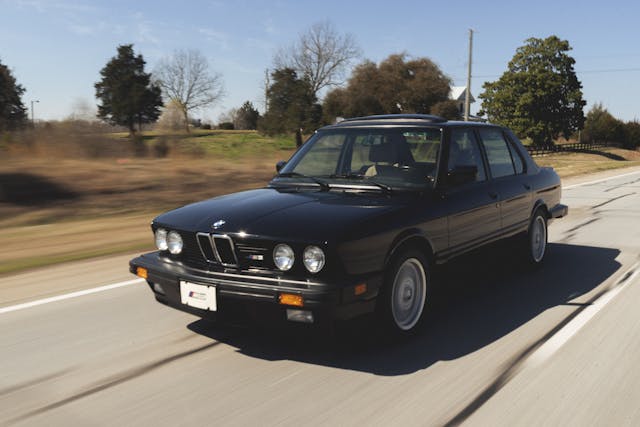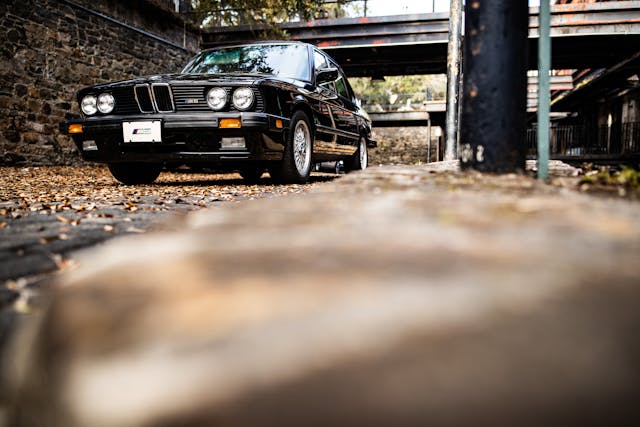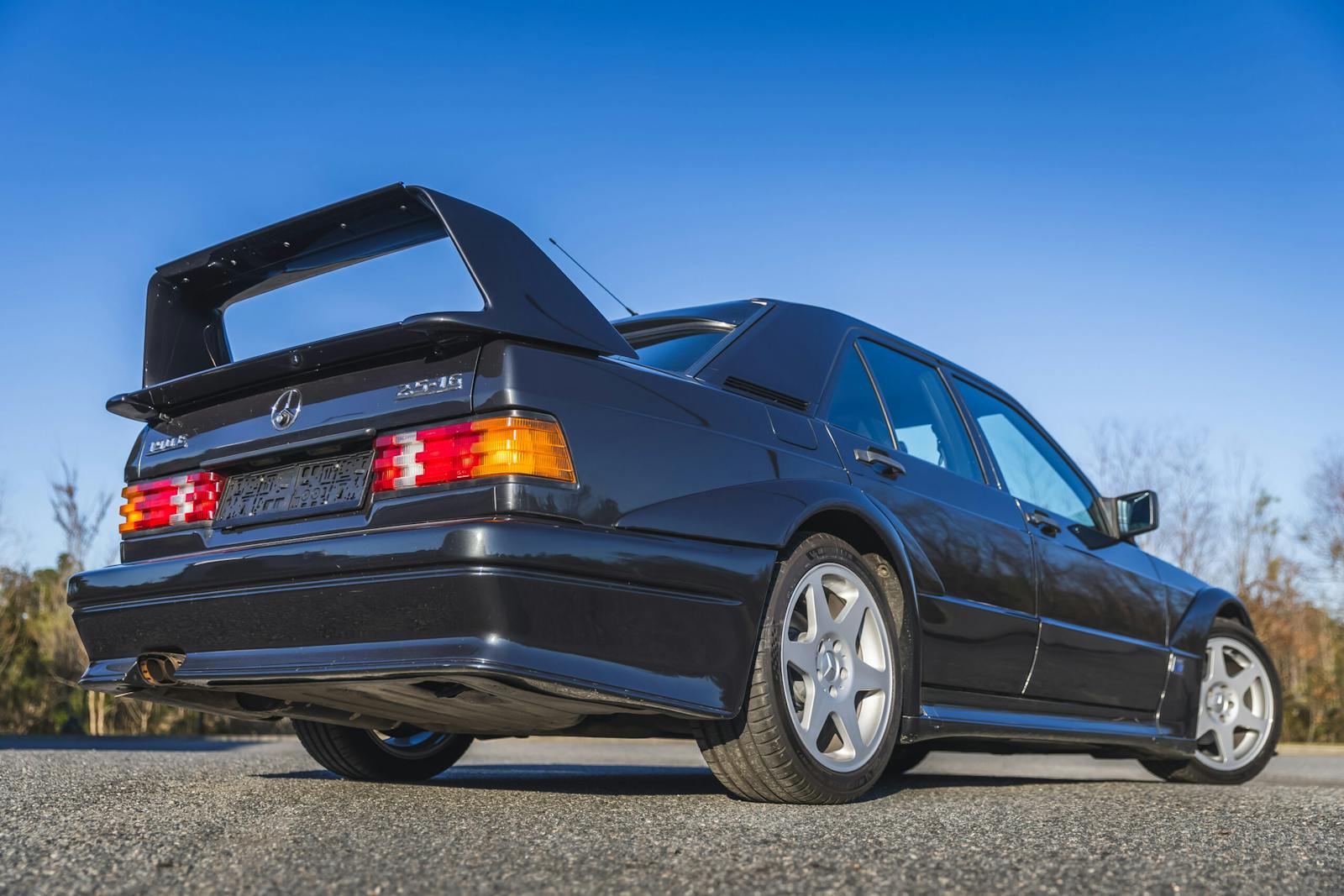My old BMW M5 is the perfect example of third-owner syndrome
About ten years ago, I bought a 1988 BMW M5. One of the earliest Motorsports cars brought to the U.S., the Darth Vader black five-speed E28 M5 was part of the first wave of uber-performance sedans that stuck a shiv into the ribs of the Malaise Era. The original list price of the car was $46,500, or, about $120,000 in today’s dollars. The first owner was a doctor in Seattle, but by the time I got my grubby bottom-feeder paws on the car, it had been through two subsequent owners and had some significant needs. But in life, timing is everything, and I wound up doing just fine because of a little luck and the quirks of the collector car market.
Third-owner syndrome is now a term of art, that as nearly as I can tell, was coined by Hagerty Price Guide Publisher Dave Kinney. It describes the situation in which buyers of fully depreciated exotics can afford the initial buy-in, but when it comes to exotic car maintenance, let’s just say that more basic needs, like food and shelter expenses, divert a significant amount of cash. My M5 was a textbook example. I bought it after a phone call from my good friend, the late Paul Duchene, a longtime Hagerty contributor. It was being stored outside under a tarp somewhere in rural Oregon. He thought it probably ran, or at least would run.

As I recall, it ran well enough to get itself up on a trailer, and my all-in price for the car was about $10,000 delivered to Ann Arbor. Cosmetically, it wasn’t bad—the seats were a little dry, and the black paint was a web of swirl marks, as if the third owner had habitually wiped down the wheels and then dried the car with the same gritty towel. The seats responded to some intensive treatments, and the paint corrected just fine. Tires, calipers, fuel injectors, and a tank cleaning had the car running like a champ. None of this work was horribly pricey—I think it totaled around $4000. But for the third owner of the car, it might as well have been $40,000, or $400,000.
It’s a story that plays out frequently in the collector car world. The first owner is an obviously well-to-do individual, and if he or she is someone who trades cars frequently, owner number two (who is often only slightly less well-to-do, and perhaps even a little more savvy), can often get a nice used car with some warranty left. This person often gets the remainder of the “good” miles out of the car, finally letting it go when it’s almost fully depreciated and starting to show its age.
Enter the starry-eyed third owner, who thinks that he or she can get away with just putting in gas and oil, and maybe even DIY some of the maintenance. Then they buy a shop manual and quickly get overwhelmed at the first sight of a wiring diagram. One of three things inevitably happens—they get sick of the car taking up space and cut it loose; they put the minimal amount of money into keeping the car on the road while deferring any expensive maintenance until the can can’t be kicked any further; or they hang on long enough to actually see some appreciation.

Picking up a coveted car that’s gone through the life cycle I’ve described can be a bit of a gamble. The M5 offers a bunch of potential pitfalls: wear items, like shot front-control arms, can add up. Certain elements like the rear Self Leveling Suspension are costly on their own. Don’t get me started on engine maintenance—worn timing chain guides can cause the engine to jump timing, and trust me, you don’t want to try to find a replacement cylinder head for these cars. There was a non-zero chance that if I didn’t play my cards right and do my homework, a car like this could end up putting a hole in my wallet and have me well underwater after all was said and done.
That said, I’m a bit of an ambush predator. I’d always wanted an E28 M5. I knew that they could swallow a fair bit of cash, and the only way that this hobby has worked for me is to not lose a bunch of money whenever I move on. So I waited in the weeds for these cars to show some sign of catching on in the collector car world. That’s the key, whether for my M5 or that car you can’t get off your mind—it can take a market increase to change the economics of repairs. I got in toward the end of the low prices, got the maintenance up to snuff, enjoyed it for a while, and sold it for a few grand more than I had in it. Those are the joys of being the fourth owner. But that’s a story for another day.
***
Check out the Hagerty Media homepage so you don’t miss a single story, or better yet, bookmark it. To get our best stories delivered right to your inbox, subscribe to our newsletters.



This story easily describes me, and my four-year experience with a 25-year-old Lexus SC400.
The first ones, (1992) sold for around $40K. Lord knows what that’d be in 2017 dollars.
Anyway, I paid $2900 (7% of that) for the car, which was in very good shape, with relatively low mileage.
I loved it.
Fast-forward a few years and the car developed a stalling problem.
After much research and replacements of certain electronics, AND having it at my mechanic’s shop; the cause still could not be determined. This whole ordeal cost me over $600.
Rather than go through the usual hassles of selling a car, one not even running, I decided to donate it to NPR.
Dammit, I still miss it…
I have seen this deal play out time after time on Jags, Porsches, BMW and a host of imports.
People see a fancy expensive image car and the price is close to what they would pay for a new domestic.
Then the service lights come on and problems start where the care and feeing is beyond their budget.
I have a local dealer that sells a number of Aston Martins here for $50-60k that look great. But then the problems start as they need parts and mechanics they can’t afford.
Many get snookered on the 30k mile maintenance on Ferraris.
You don’t have to be wealthy to buy them but you need the means to fund the Care.
This is where my C5 excels. The car is no harder to repair than a Chevy pickup. The parts easy to find and afford. This is the joy of my Corvette. I don’t drive with the fear of major issues and costs. I have an engine that needs little done for hundreds of thousands of miles.
No matter what I buy the care and feeding is a major part of my purchase.
Corvette deserves long-term respect for keeping it desirable and attainable (one could drive a used recent generation Corvette as their daily instead of a new “average person” vehicle. If willing to accept the compromise in function that may entail).
Social media fans the flames of people thinking buying wrecked/well worn exotics is a good idea.
A very slim % of people make money flipping cars. The average hobbyist is not that person, unless long term ownership creates the value. For me, once you have it long term it isn’t a flip though.
I bought my e28 M5 for 6600 as I recall in 2000. It had 146k and had perfect paint. Took care of some needed maintenance items. Then over time , replaced the suspension completely and all timing components. Found a set of BBS RS wheels , e34 cams and euro headers. The fun continues…
There are cars you buy new and trade, There are cars you lease and then there are some cars you buy and keep. These cars that take a lot of work and investment to keep on the road are generally the first two choices.
Now if you specialize in these problem cars there is a market of where you buy them cheap and you can flip them for a profit. A friend of mine buys old BMW problem children and he has the tools and knowledge to do the work himself. He flips them and makes a good buck doing it.
Some problem cars can be a blessing to to some.
if you can’t enjoy the car at what ever point you own it in its life because of worrying about how much it’s costing then what’s the point of owning it? Admit to yourself that you couldn’t afford it new or used or be comfortable with the costs of ownership under any circumstances. At that point it becomes an unrealized dream – and that’s ok because otherwise it is self torture for no purpose.
If you don’t wana pay the cost of the adventure AND be able to enjoy it on the way… just go buy a Toyota and stop whining.
You are exactly right. I drive a spitfire 1500. Fun to drive. Keeps me thinking. Parts are inexpensive. Likely cost less than a bmw tune up. The hobby has to be fun or why do it.
As the current owner of FIVE third owner cars, once I get them up to snuff I have a budget of $150-200/mo for the regular drivers…and $75-100 / mo for the clear skies cars for maintenance. I count maintenance as all expenses other than gas. Never fails…my wife and I have the joy of classic and expensive looking cars for FAR LESS than one new luxury SUV or Euro car, with none of the depreciation.
Dan could not agree more. I put aside funds monthly and my auto escrow provides more smiles per miles than anything new I’ve driven in a while. My daily driver 2009 E90 BMW328i with 260k ( purchased new ) is no more expensive than a 2023 SUV payment. Likes wise for a 2004 996 coupe ( 79k ) that I can even do some of the work myself. Then my fun vehicle 1954 Chevy 3100 pickup, never needs more than the basics. All in per your note, less than a modern SUV payment and way more fun.
Key to avoiding the money pit is to be the 2nd owner of a vehicle that’s had at least normal maintenance and reasonable mileage – those have been my best daily drivers & hobby cars. The status-symbol cars are too often owned by people who are only in it for the status, and care & maintenance are low priorities. So far, that scenario has played out better than a cheap buy-in and then huge repair expenses, and often the early depreciation is significant enough to help that math.
Some of my happiest car deals have been once-premium cars that somebody was trying to bring back into a lovable condition, only to give up when the car was almost perfect. And I have purchased parts cars with new parts already installed that were worth 3 or 4 times the price I paid. Once again, somebody gave up.
I drove those M wagen when they were new at the dealership. Could you believe some had a leather dash?
Most were replaced under warranty as the stitching pulled out and the whole chunk shrunk in the sun. Dumb idea and I’m a German. Fast forward to today as the Big six is a pretty tough motor, easy to live with and chains,rails and guides are a route of passage. They all eat front end/suspension parts ( most cars do) that’s why they handle well as they have pretty close tolerances, but I doubt the M parts are much different …springs and struts maybe.
As a former high line import dealer, I saw this again and again. People buy older cars with stars in their eyes, and find out reality, and deferred maintenance is something else. Had one customer buy a “cream puff”: looks good on the outside, rotten on the inside. The service estimate exceeded the sale price, and now he was trying to make it my issue that he had bought a bad car from someone else. Sorry.
I used to want a 928. Then I did a bunch of research and saw a few statements on various sites, saying basically any 928 will cost you at least $20,000. Some said $25,000. That’s after you buy the $14,000 928 and spend another $6,000 or $9,000 or whatever the number is getting it on the road and safe from engine fires etc. Before covid prices it looked like you could get a great driver 928 for $10,000. nope.
I’m the third owner of a BMW E30 318is–nowhere nearly as exotic, or as expensive to maintain as an early (or any!) M5. Fortunately–and the reason I bought the car–is it’s two previous owners (friends) had babied the car from day one. In 9 years of ownership and 20-some thousand miles, I’ve only had the A/C recharged and replaced a leaking steering rack. Best of all I bought it before E30 prices started to increase, especially for the one-year 381is, AKA “poor man’s M3.”
So there are two-owner cars out there that when purchased at the right time in their value curve and have had two loving owners, can be a great deal from day one.
A nine year old Bentley was recently observed pulling into a Cheddars parking lot in Memphis. One of the rear side windows had cardboard taped in place. It was sitting a little wonky and when the guy accelerated it smoked like a diesel VW with 300k miles. We watched them park and get to two baby carriers out of the back seat. Dude seriously needed a Honda mini van, but his his high class ride might make that an impossibility, unless a car crash lawsuit results in a settlement. Pity the young.
Yeah, that would be me. I just never learn, I think I just like working on them. Sometimes I finish them. Hopefully I’ll keep the last two I am here working on…..
Nice story, Mr Sass. I drove a new M5 when they were first introduced and was impressed beyond words. I came home and told my wife I had just driven a race car with four doors. Just surprised I never owned one.